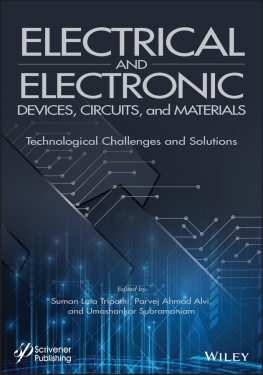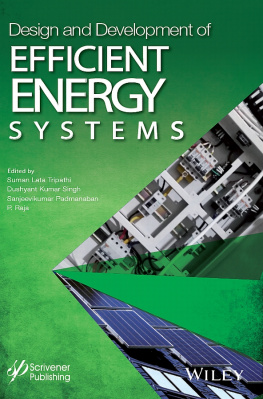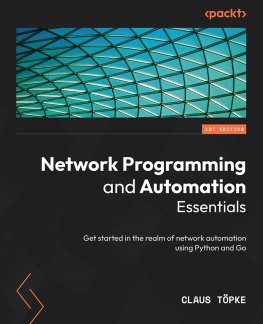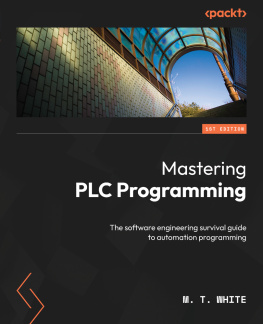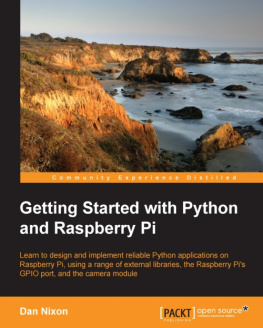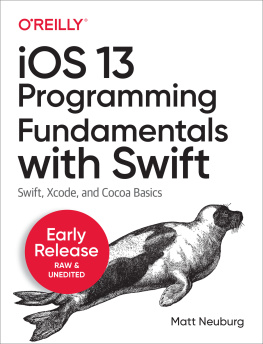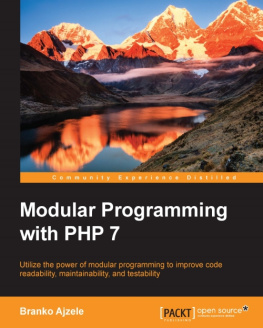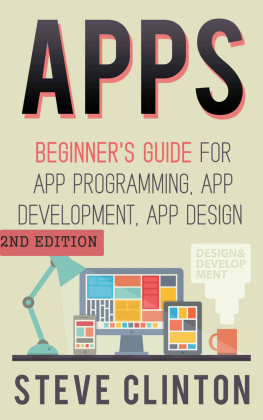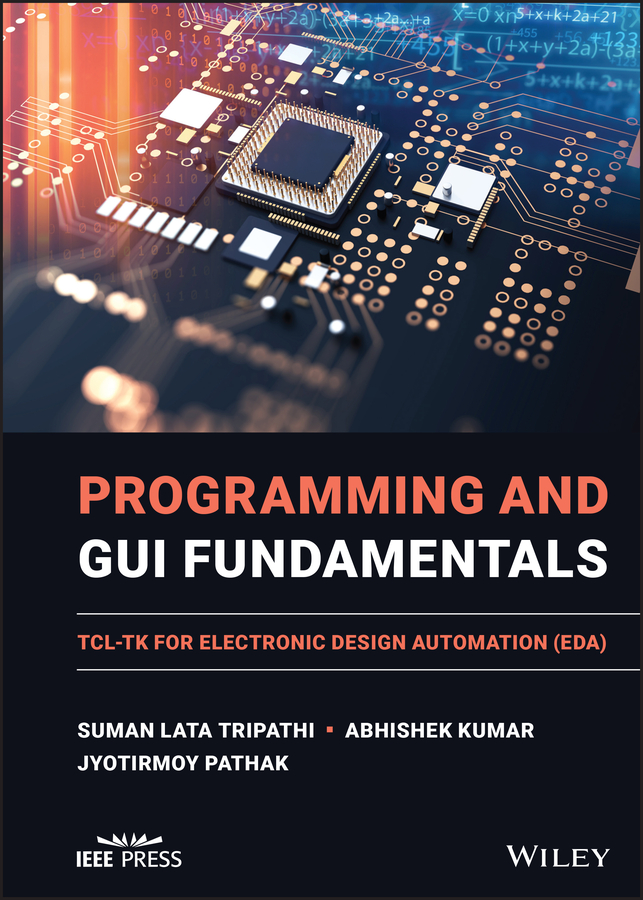
Table of Contents
List of Tables
- Chapter 1
- Chapter 2
- Chapter 4
- Chapter 6
- Chapter 7
- Chapter 8
- Chapter 9
- Chapter 10
List of Illustrations
- Chapter 1
- Chapter 2
- Chapter 3
- Chapter 4
- Chapter 5
- Chapter 6
- Chapter 7
- Chapter 8
- Chapter 9
- Chapter 10
Guide
Pages
IEEE Press
445 Hoes Lane
Piscataway, NJ 08854 |
IEEE Press Editorial Board
Sarah Spurgeon, Editor in Chief |
| Jn Atli Benediktsson | Andreas Molisch | Diomidis Spinellis |
| Anjan Bose | Saeid Nahavandi | Ahmet Murat Tekalp |
| Adam Drobot | Jeffrey Reed |
| Peter (Yong) Lia | Thomas Robertazzi |
Programming and GUI Fundamentals
TclTk for Electronic Design Automation (EDA)
Suman Lata Tripathi
Lovely Professional University
Phagwara, India
Abhishek Kumar
Lovely Professional University
Phagwara, India
Jyotirmoy Pathak
Lovely Professional University
Phagwara, India

Copyright 2023 by The Institute of Electrical and Electronics Engineers, Inc. All rights reserved.
Published by John Wiley & Sons, Inc., Hoboken, New Jersey.
Published simultaneously in Canada.
No part of this publication may be reproduced, stored in a retrieval system, or transmitted in any form or by any means, electronic, mechanical, photocopying, recording, scanning, or otherwise, except as permitted under Section 107 or 108 of the 1976 United States Copyright Act, without either the prior written permission of the Publisher, or authorization through payment of the appropriate percopy fee to the Copyright Clearance Center, Inc., 222 Rosewood Drive, Danvers, MA 01923, (978) 7508400, fax (978) 7504470, or on the web at www.copyright.com. Requests to the Publisher for permission should be addressed to the Permissions Department, John Wiley & Sons, Inc., 111 River Street, Hoboken, NJ 07030, (201) 7486011, fax (201) 7486008, or online at http://www.wiley.com/go/permission.
Limit of Liability/Disclaimer of Warranty: While the publisher and author have used their best efforts in preparing this book, they make no representations or warranties with respect to the accuracy or completeness of the contents of this book and specifically disclaim any implied warranties of merchantability or fitness for a particular purpose. No warranty may be created or extended by sales representatives or written sales materials. The advice and strategies contained herein may not be suitable for your situation. You should consult with a professional where appropriate. Further, readers should be aware that websites listed in this work may have changed or disappeared between when this work was written and when it is read. Neither the publisher nor author shall be liable for any loss of profit or any other commercial damages, including but not limited to special, incidental, consequential, or other damages.
For general information on our other products and services or for technical support, please contact our Customer Care Department within the United States at (800) 7622974, outside the United States at (317) 5723993 or fax (317) 5724002.
Wiley also publishes its books in a variety of electronic formats. Some content that appears in print may not be available in electronic formats. For more information about Wiley products, visit our web site at www.wiley.com.
Library of Congress CataloginginPublication Data applied for:
Hardback: 9781119837411
Cover Design: Wiley
Cover Image: whiteMocca/Shutterstock
About the Authors
Dr. Suman Lata Tripathi received her Ph.D. in the area of microelectronics and VLSI from MNNIT, Allahabad. She received her M.Tech in Electronics Engineering from UP Technical University, Lucknow, and her B.Tech in Electrical Engineering from Purvanchal University, Jaunpur. She is a Professor at Lovely Professional University and has more than seventeen years of experience in academics. She has published more than 74 research papers in refereed journals and conferences. She has organized several workshops, summer internships, and expert lectures for students. She has worked as a session chair, conference steering committee member, editorial board member, and reviewer in international/national IEEE journals and conferences. She has received the Research Excellence Award in 2019 and Research Appreciation Award in 2020, 2021 at Lovely Professional University, India. She received the best paper award at IEEE ICICS2018. She has published the edited books Recent Advancement in Electronic Devices, Circuit, and Materials; Advanced VLSI Design and Testability Issues; and Electronic DevicesandCircuit Design Challenges for IoT Application. She is also an editor of the book series on Green Energy: Fundamentals, Concepts, and Applications and Design and Development of Energy Efficient Systems, which are yet to be published. She is currently working on an accepted book proposal specifically on Electronic Device and Circuits Design Challenges to Implement Biomedical Applications. She is working as a series editor for a title,Smart Engineering Systems.
Her area of expertise includes microelectronics device modeling and characterization, low power VLSI circuit design, VLSI design of testing, advanced FET design for IoT, embedded system design, biomedical applications, etc.
Mr. Jyotirmoy Pathak has completed his post graduation in VLSI Design and graduation in Electronics and Communication Engineering from Anna University, India. He holds more than 10 research papers in a refereed journal. He holds 9 patents and 1 copyright. He has been the reviewer of many journals such as the IETE Journal of Research etc. He has also played the role of session chair for many international conferences.
His area of expertise includes VLSI signal processing, hardware security, FPGA prototype development, and low power ASIC design.
Dr. Abhishek Kumar obtained his Ph.D. in the area of VLSI Design for Low Power and Secured Architecture from Lovely Professional University, India. He received his M.Tech in Electronics Engineering from the University of Mumbai, India, and graduated from The Institution of Engineers (India). He has been an Associate Professor at Lovely Professional University for 11 years. He has published more than 35 research papers in refereed journals and conferences. He has organized workshops, summer internships, and expert lectures for students. He has worked as a session chair, conference steering committee member, editorial board member, and reviewer in international/national journals and conferences. He has published the book Intelligent Green Technologies for Sustainable Smart Cities with WileyScrivener and another book Machine Learning Technique with VLSI is in production with WileyScrivener.
His area of expertise includes VLSI design, low power architecture, memory design, data converters, ASICSoC, cryptology, and side channel attacks.
Introduction
Language is a structured system of communication used by humans. When a human wishes to communicate with a computer system, a programming language is required. A programming language is able to convert a set of instructions, known as the source code, to perform a specific task. There are a number of common programming languages, such as C, C++, and JAVA. Each programming language requires a specific compiler, which is able to translate the source code into machine code. There are also other mechanisms to produce machine code that are interpreterbased, and these use stepbystep executors of the source code. A language can be implemented with either a compiler or interpreter. A combination of both platforms is possible too where the compiler generates the machine code and then passes it to the interpreter for execution .
Next page

